The first part of this series talked about heat, what to make you box out of and whether you really need a box at all. On to other details:
Box size: The box should be as small as possible to minimize the amount of steam you need. The longest standard part I bend is 63″, a loop back bow. Only settee bends are longer. A 4“ ID pipe will hold around three continuous arm bows and many more loop back bows; my 8×8” box holds a dozen continuous arm bows.
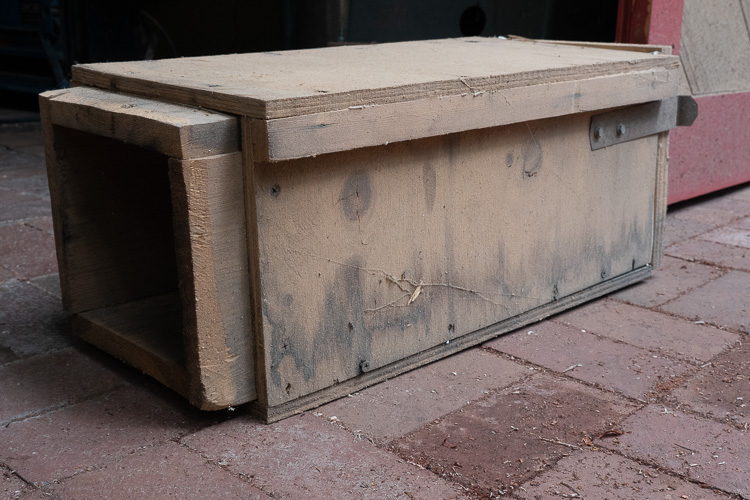
This extension for my steam box sleeves into one end of the box when I bend settee bows.
Extensions: Make your box a couple inches longer than the average sized piece of wood you bend. For longer pieces, a coupling makes it easy to extend boxes made from pipe. A wooden extension is easy to make.
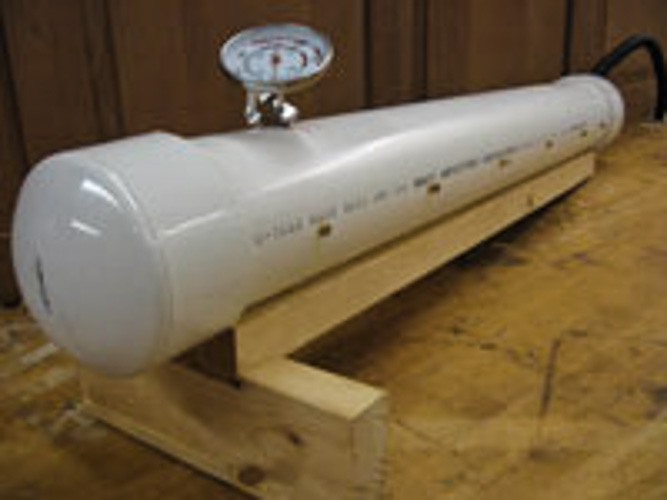
A meat thermometer works great
Thermometer: Every box should have a thermometer. A simple meat thermometer ($1 at your local thrift store) inserted through a small hole in the top of the box works well.
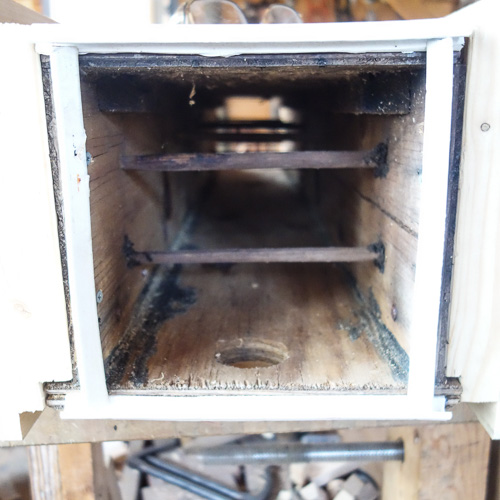
My enormous box (enough room for a dozen continuous arm bows) has racks made from dowels.
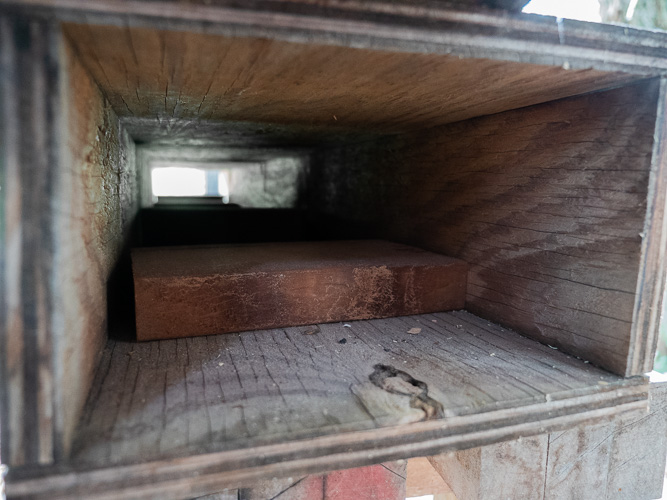
Curtis Buchanan keeps his parts off the bottom of the box using blocks of wood.
Racks: Small steam boxes may not need racks, but since heat rises, keeping the parts higher in the box isn’t a bad idea. Your thermometer can quickly tell you whether you need them – just measure the temp at the bottom of the box and compare it to the temp at the top of the box.
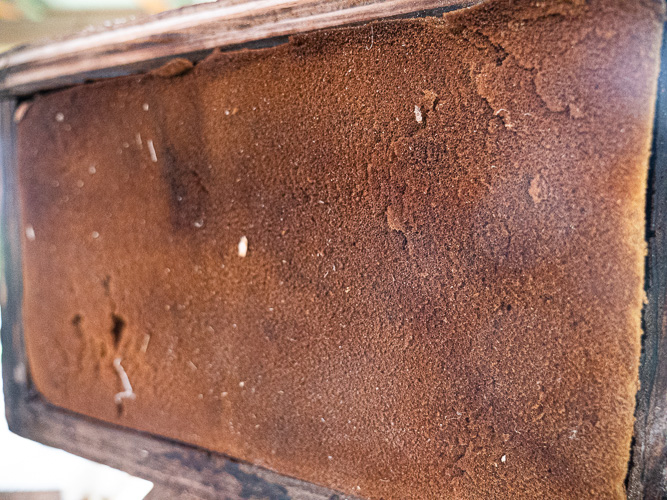

I made the latch for my door by bending a piece of strapping steel into a latch, that hooks to the side of the door. I needed to add a piece of metal to the door for the latch to hook to, since my door was too small to catch the latch).

A meat thermometer works great
Doors: Make doors out of one or more layers of exterior plywood, since solid wood can swell and warp during steaming. Doors should allow slight steam leakage, since steam needs to flow over the pieces of wood for good heat transfer.
Wooden boxes are nice with hinged doors. Put the hinge on the bottom of the door so the open door is out of the way while you’re removing pieces of wood. A catch is easy to make out of a bent piece of steel strapping or other springy metal.
Tapered plywood plugs work well to plug pipe steam boxes. PVC plumbing caps also work well.

I use a hinging door – just make sure it hinges down (like this) or to the side – if it hinges up you will get burned opening it.

Excellent information, and when I wear out the box I made I’ll make sure to incorporate a bunch of these suggestions.